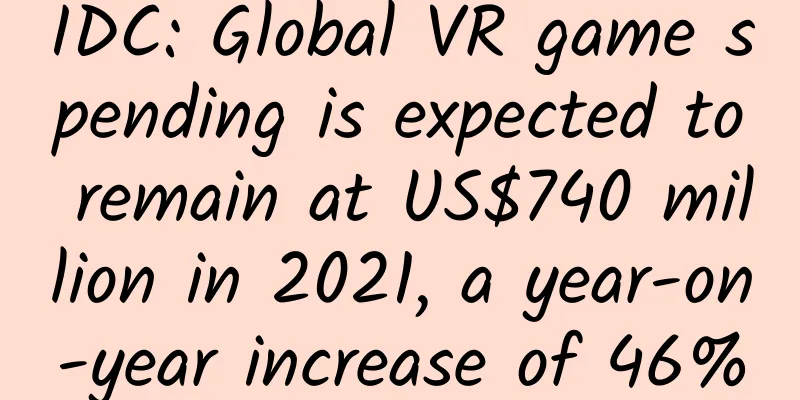IDC: Global VR game spending is expected to remain at US$740 million in 2021, a year-on-year increase of 46%

|
In the consumer space, we see a growing number of profitable games, which drives the industry's ability to produce the next generation of VR gaming products. It is worth noting that sports and fitness-themed games have maintained strong growth during the epidemic. IDC predicts that VR game spending will reach US$740 million in 2021, a year-on-year increase of 46%. Given that the overall game market spending is approximately US$18.5 billion, there is still a lot of room for penetration to increase. In the short term, commercial demand is the main driver of AR headset shipments. Growth in the consumer sector will take longer. Breaking down AR enterprise applications, the concept of "see what I see" is still the main driver, followed by knowledge conversion and delivering digital assets and instructions (i.e. connecting frontline workers in the field with headquarters to help them do their jobs). Currently, AR applications in the consumer sector are still mainly used for retail experience and screening. Facebook maintained its leading position in the VR hardware market in the second quarter of 2021, with shipments of approximately 1.6 million units (up 351% year-on-year). This was mainly driven by Oculus, whose Quest 2 product achieved huge growth, partly due to supply chain constraints in the same quarter last year. Meanwhile, Pico ranked second, and the company continued to consolidate its position as an alternative to Oculus in the consumer and commercial fields. In the second quarter of 2021, in the AR hardware market , Microsoft shipped nearly 20,000 units, a year-on-year increase of 26%. The company continued to drive sales of its HoloLens 2 products, which increased significantly year-on-year and topped the list in the second quarter. This is in stark contrast to Mad Gaze, whose shipments fell 30% year-on-year to about 15,000 units in the second quarter. It is worth mentioning Shadow Creator, which won the third place with significant year-on-year growth due to its continued growth in the Chinese market. IDC predicts that VR headset shipments will increase from approximately 5 million units in 2020 to more than 28 million units in 2025. For AR headsets, shipment growth is expected to be even more significant - from approximately 300,000 units in 2020 to 21 million units in 2025. |
<<: Snap: 2Q20 earnings call transcript Daily active users increased 17% year-on-year to 238 million
>>: Here are the top 10 hot questions and answers for current epidemic prevention
Recommend
What to do if your menstrual period is black and has an odor
Women are particularly prone to some gynecologica...
Treatment of white spots on female vulva
Gynecological diseases are very harmful to women&...
Panax notoginseng powder cured uterine fibroids
Many women will try every possible means to treat...
Why do I have back pain before my period?
Before women have their periods, they will have s...
Look at the key figures to understand the harm of tobacco
Tobacco harm is one of the most serious public he...
Treatment of vaginal polyps
Many people don’t know what vaginal polyps are. I...
Health Tips | Can cancer be diagnosed through blood tests alone?
Can cancer be diagnosed with a blood test alone? ...
Should girls shave their armpit hair?
In the hot summer, many girls will try their best...
Why does the Romance of the Three Kingdoms respect Liu and suppress Cao? How did Liu Chan die in the Romance of the Three Kingdoms?
The Romance of the Three Kingdoms is the first ch...
Apple: Nearly 1 million new apps rejected by App Store in 2020
Apple Inc said Tuesday it rejected nearly 1 milli...
How to solve the problem of accelerated heartbeat during pregnancy
Accelerated heartbeat during pregnancy is a conce...
Why does a pregnant woman with stomach pain in the eighth month
With the rapid development of the economy, people...
What does a fibroid look like?
Fibrosis is a tumor and also a disease that will ...
What disease is it that causes the small blisters on the vulva?
In daily life, both men and women should pay atte...









